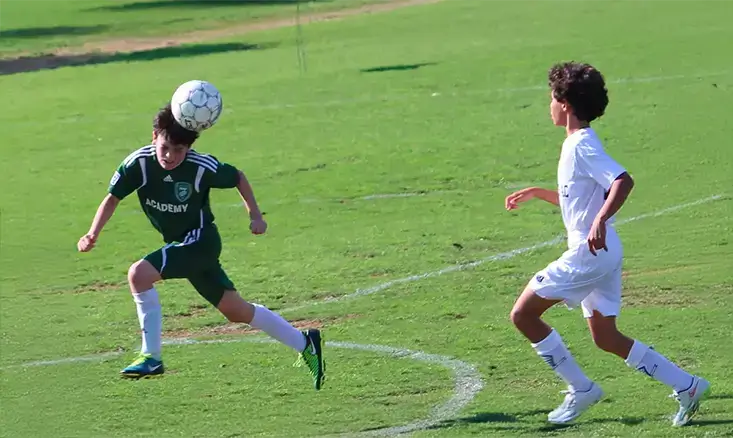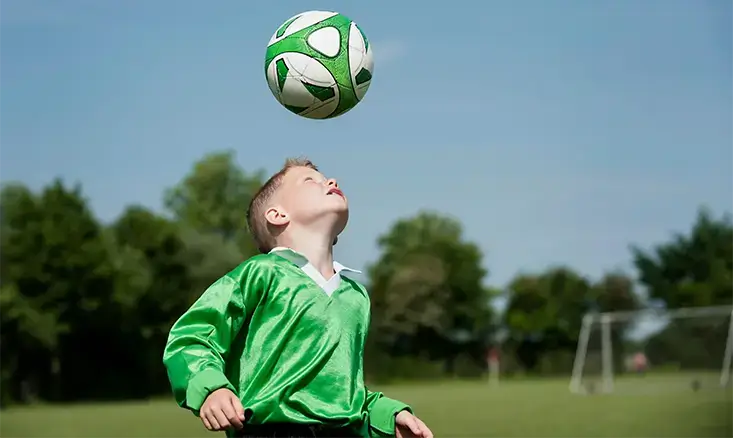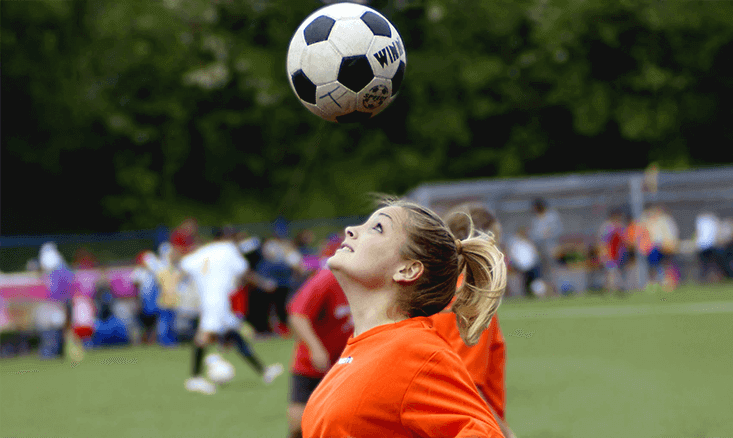CRFC BLOGS
LATEST BLOGS & NEWSLETTERS
Youth Soccer Heading Rules: Protecting Young Players for a Safer Game
Youth soccer is more than just a game. For millions of young players, it’s a way to stay active, learn discipline, and build teamwork. However, as youth soccer has grown in popularity, so has the awareness of safety, especially regarding head injuries. Recent studies have highlighted the risks associated with repetitive head impacts, such as those that can occur during soccer heading. As a result, “Youth Soccer Heading Rules” have been introduced to protect young players from potential head injuries and concussions.
This article will explain these heading rules, why they’re necessary, and how they aim to create a safer environment for young players. We’ll cover the guidelines for different age groups, the reasoning behind these rules, and the roles of coaches, parents, and players in promoting safe soccer practices.
Understanding the Basics of Youth Soccer Heading Rules
In 2016, the U.S. Soccer Federation introduced the U.S. Soccer Concussion Initiative, a set of guidelines to address head injury risks in youth soccer. This initiative is designed to reduce the risk of concussions in young players by implementing age-specific restrictions on heading the ball. Heading, a technique where players use their heads to redirect the ball, can be risky for young players, as their brains are still developing.

What is Heading in Soccer?
Heading in soccer is a common skill used to control or pass the ball in the air. However, this action can expose players to repetitive head impacts, which, over time, may contribute to brain injuries. While heading is an essential part of soccer, especially at higher levels, it’s vital to introduce it safely and gradually for younger players.
Why Youth Soccer Heading Rules Are Necessary
The heading restrictions are based on growing research about the risks of concussions and head injuries in youth sports. Young players are at a higher risk for brain injuries than adults because their brains are still developing. Repeated head impacts, even from activities like heading, can contribute to potential long-term health issues, including cognitive decline and neurological disorders. Young players are especially vulnerable because their brains are still maturing, which makes them more susceptible to injury from head impacts.
By limiting heading in youth soccer, organizations are taking steps to protect players’ brains during critical development periods. These guidelines help young players enjoy the game safely without compromising their long-term health.

Age-Based Heading Restrictions in Youth Soccer
-
For Players Aged Ten and Under
- Players who are 10 years old or younger are strictly prohibited from heading the ball in both practices and games. Coaches working with these age groups focus on other fundamental soccer skills, such as dribbling, passing, and positioning, avoiding any training that includes heading.
- Children under 10 have developing brains that are more vulnerable to injury. Research has shown that repeated head impacts, even at low levels, can lead to potential long-term health risks. By eliminating heading entirely for young players, organizations reduce the chances of these impacts affecting their brain development.
- If a player in this age group heads the ball intentionally during a game, referees are instructed to award an indirect free kick to the opposing team. This rule emphasizes that heading is not permitted and helps reinforce the guidelines during gameplay.
-
For Players Aged 11-13
- In this age group, limited headings are allowed during practice. Players can only head the ball for a maximum of 30 minutes per week, and no player should attempt more than 15-20 headers in that time. These guidelines help players gradually learn heading skills while reducing the risk of injury.
- Heading is allowed during games for players aged 11-13. However, coaches must provide instruction on safe heading techniques and monitor players to ensure that they follow safe practices.
- This age-based approach allows players to start learning in a controlled way, which is safer for their brains. It also helps build muscle memory and correct technique, making it less likely that they’ll experience injuries as they get older and begin playing more competitively.
-
For Players Aged 14 and Older
- Once players reach the age of 14, there are no specific restrictions on heading in either practice or games. However, coaches are encouraged to teach proper techniques and educate players about head injury risks.
- At this age, players have greater physical strength and coordination and are better equipped to learn the proper technique for heading. Teaching safe practices is still important, as it minimizes the risk of concussions and other head injuries as players age and start playing at higher competitive levels.

The Role of Coaches and Referees in Enforcing Heading Rules
For these heading rules to be effective, coaches and referees must work together to consistently apply them.
Coaches
Coaches play a crucial role in educating players about these rules. In the early stages, they focus on teaching essential soccer skills that don’t involve heading. For players in the 11-13 age group, coaches provide instruction on safe heading techniques and monitor practices to ensure players stay within the recommended heading limits.
Referees
During games, referees enforce the rules by age group rather than by each player’s individual age. For example, if a player aged 10 or under heads the ball, the referee awards an indirect free kick to the opposing team. This rule helps enforce the guidelines and keeps players aware that heading is not allowed at their age.
Conclusion
Youth soccer heading rules are a valuable step toward ensuring that young players stay safe on the field. By adapting the rules to different age groups, these guidelines offer a balanced approach that enables players to enjoy the game while prioritizing their safety and health.
FAQs
Why are there heading rules in youth soccer?
The heading rules are in place to reduce the risk of head injuries and concussions, which can have serious long-term health effects, especially on developing brains.
Can players under 10 ever head the ball?
No, players aged 10 and under are not allowed to head the ball in either practices or games. This rule is in place to protect young players from potential brain injuries.
What should I do if I suspect my child has a concussion?
If your child shows any signs of a concussion, such as headache, dizziness, confusion, or sensitivity to light, it’s important to seek medical attention immediately. Concussions require time to heal, and your child should not return to play until cleared by a healthcare professional.
How do heading restrictions impact skill development in youth soccer?
While heading is an essential skill in soccer, the restrictions on heading for younger players are unlikely to impact their long-term development. Youth soccer focuses on foundational skills such as dribbling, passing, and positioning. By the time players reach the age where heading is allowed (around 11-13), they will have already developed the core techniques needed for effective gameplay. The gradual introduction of heading ensures that players build this skill safely and at a more physically prepared age.
What should coaches focus on instead of heading for younger players?
For players under 10, coaches are encouraged to concentrate on other essential soccer skills that contribute to overall player development. These include ball control, footwork, teamwork, spatial awareness, and game strategy. Practicing these skills at a young age builds a strong technical foundation and improves game understanding, both of which are critical to becoming a well-rounded player. Coaches can also introduce basic concepts of heading technique (without impact) to build awareness for future training.

Did you find this useful?


